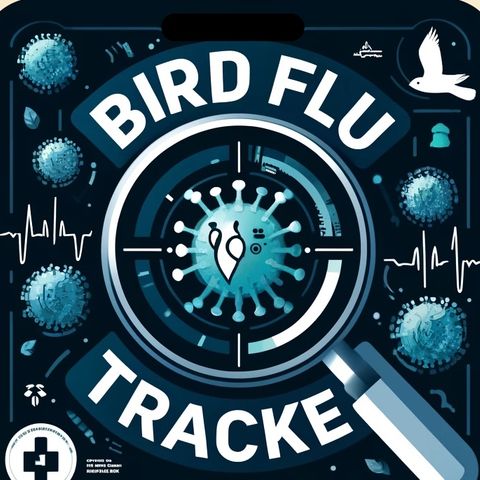Bird Flu update for 06-15-2024

Download and listen anywhere
Download your favorite episodes and enjoy them, wherever you are! Sign up or log in now to access offline listening.
Bird Flu update for 06-15-2024
This is an automatically generated transcript. Please note that complete accuracy is not guaranteed.
Description
The risk of bird flu, also known as avian influenza, is currently limited primarily to individuals who work closely with dairy cattle, highlighting a concerning trend in the spread of...
show moreBird flu is typically known to affect poultry, but the emergence of cases in cattle is alarming farmers, veterinarians, and health authorities. The transmission pattern suggests that those who come into direct contact with these animals, especially workers in the dairy industry, are inadvertently facilitating the spread of the virus among cattle. This could be through contaminated equipment, clothing, or through direct contact with infected animals.
The implications of bird flu in dairy cattle are significant, as it affects not just the health of the animals but potentially impacts the dairy supply chain and market. Health experts are stressing the importance of strict biosecurity measures to contain the outbreak. These measures include regular sanitization of farms, proper disposal of animal waste, and isolating any animals that show symptoms of the flu.
Additionally, authorities are closely monitoring the situation to prevent the virus from jumping to humans. While the current risk of human infection is low, the evolving nature of such viruses poses a potential threat that could lead to a wider health crisis if not managed effectively.
Farmers and dairy operators are being urged to remain vigilant, report any unusual sickness in cattle, and follow recommended practices to protect themselves and their livestock. Meanwhile, researchers are studying the transmission patterns of the virus to better understand its behavior in cattle and to develop strategies that could potentially stop the spread of the virus not only among cattle but to other species as well.
The situation remains a critical focus for public health and animal care professionals in South Carolina and potentially across other regions if the trend continues. They are working together to ensure the safety of agricultural workers and the general public while maintaining the integrity of the dairy industry.
Information
| Author | QP-3 |
| Organization | William Corbin |
| Website | - |
| Tags |
Copyright 2024 - Spreaker Inc. an iHeartMedia Company
